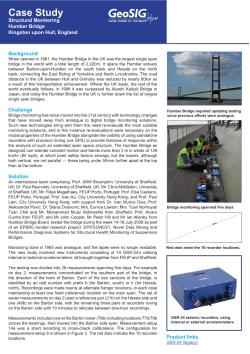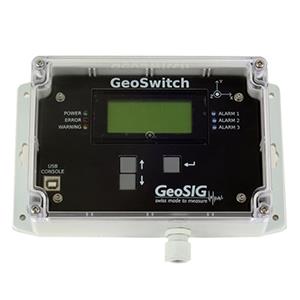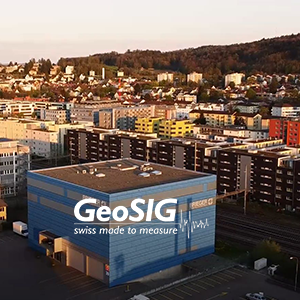
Download Humber Bridge, England Case Study
Background
When opened in 1981, the Humber Bridge in the UK was the largest single span bridge in the world with a total length of 2,220m. It spans the Humber estuary between Barton-upon-Humber on the south bank and Hessle on the north bank, connecting the East Riding of Yorkshire and North Lincolnshire. The road distance in the UK between Hull and Grimsby was reduced by nearly 80km as a result of this transportation achievement. Where the UK leads, the rest of the world eventually follows; in 1998 it was surpassed by Akashi Kaikyo Bridge in Japan, and today the Humber Bridge in the UK is further down the list of largest single span bridges.
Challenge
Bridge monitoring has since moved into the 21st century with technology changes that have moved away from analogue to digital bridge monitoring solutions. Such new technologies bring with them the need re-evaluate the most suitable monitoring solutions, and in this instance re-evaluations were necessary on the modal properties of the Humber Bridge alongside the viability of using standalone recorders with provision timing (via GPS) to provide histories of response within the analysis of such an extended open space structure. The Humber Bridge as designed can tolerate constant motion and bends more than 3 m in winds of 129 km/hr (80 mph), at which point safety factors emerge; but the towers, although both vertical, are not parallel — these being under 50mm further apart at the top than at the bottom.
Solution
An international team comprising: Prof. JMW Brownjohn, University of Sheffield, UK; Dr. Paul Reynolds, University of Sheffield, UK; Mr. Chris Middleton, University of Sheffield, UK; Mr. Filipe Magalhaes, FEUP Porto, Portugal; Prof. Elsa Caetano, FEUP Porto, Portugal; Prof. Ivan Au, City University Hong Kong; and Prof. Paul Lam, City University Hong Kong; with support from Dr. Ivan Munoz Diaz; Prof. Aleksandar Pavic; Dr. Stana Zivanovic; Mrs. Eunice Lawton; Mrs. Tuan Norhayati Tuan Chik and Mr. Mohammad Muaz Aldimashki from Sheffield; Prof. Alvaro Cunha from FEUP; and Mr John Cooper, Mr Peter Hill and Mr Ian Allenby from Humber Bridge Board, tested the bridge during the week 14-18 July 2008 as part of an EPSRC-funded research project: EP/F035403/1, Novel Data Mining and Performance Diagnosis Systems for Structural Health Monitoring of Suspension Bridges. Monitoring done in 1985 was analogue, and the tapes were no longer readable.
The new study involved new instruments consisting of 10 GSR-24’s utilising internal or external accelerometers, all brought together from FEUP and Sheffield. The testing was divided into 28 measurements spanning five days. For example on day 2, measurements concentrated on the southern part of the bridge, in the direction of the town of Barton. Each of the box sections of the bridge, is identified by an odd number with prefix b (for Barton, south) or h (for Hessle, north). Recordings were made mainly at alternate hanger locations, in each case maintaining at least one fixed (reference) location on the main span. The set of seven measurements on day 2 used a reference pair (21h) on the Hessle side and one (49b) on the Barton side, with the remaining three pairs of recorders roving on the Barton side with 10 minutes to relocate between one-hour recordings. Measurements included one at the Barton tower (78b) including locations 77b/79b across the bearings, then moved into the Barton side span. Measurement setup 14a was a short recording to cross-check calibrations. The configuration for measurement setup 9 is shown in Figure 3. The red dots indicate the 10 recorder locations.
































